WHAT IS Molecular Microbiology?
Molecular Microbiology gained tremendous drive due to its impact on recent molecular research aimed towards understanding the microbial world through advanced molecular approaches.
The Journal aims to reflect the developments in this field by publishing original research articles from all areas of molecular microbiology. Submission of impactful review and mini-review articles on the relevant topics is welcome. Articles showcasing implementation of novel theoretical approaches towards deep understanding on relevant topic and descriptions of novel, microbiology associated relevant software is also considered.
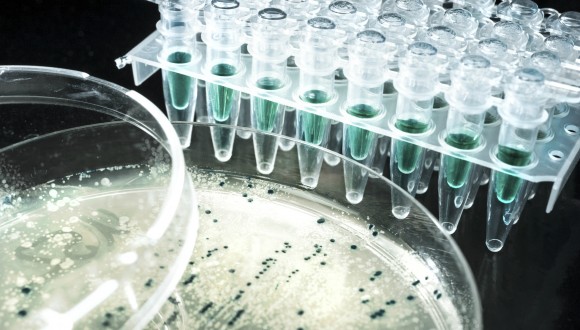
Microbiology is the study of microorganisms, those being unicellular, multicellular, or acellular, Microbiologists traditionally relied on culture, staining, and microscopy. The existence of microorganisms was predicted many centuries before they were first observed, Microbiology encompasses numerous sub-disciplines including virology, parasitology, mycology and bacteriology.
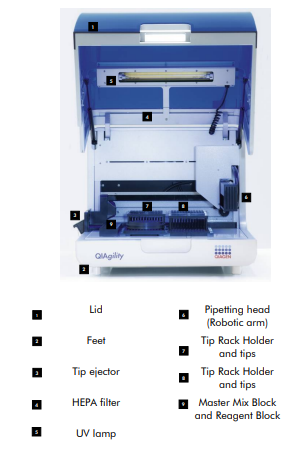
The QIAgility is designed to perform automated PCR setup and liquid handling actions in molecular biology applications.
The QIAgility is intended for use by professional users trained in molecular biological techniques and the operation of the QIAgility.
QIAgility Principle
The QIAgility uses a single-channel pipet to automate PCR setup — up to 96 PCR reactions can be set up in approximately 30 minutes. Level sensing, facilitated by conductive tips, enables high-precision pipetting.
1. The QIAgility worktable is set up with a Master Mix Block, a Reagent Block, tips and plates/tubes. The instrument is then calibrated. Note: Tubes are placed into plates and are therefore treated as plates in the software.
2. Run files are created and modified using the easy-to-use QIAgility software.
3. The progress of a run can be followed in real-time. The software highlights the position of the pipetting head on the screen as it moves.
4. The QIAgility supports virtually all plate formats, including Rotor-Discs for the Rotor-Gene® Q, therefore PCR reactions can be analyzed immediately using any PCR cycler.
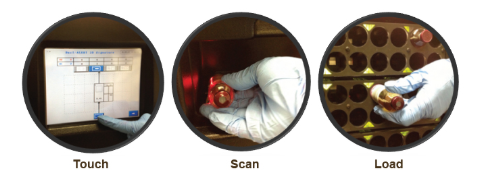
BACT/ALERT is used for detecting the presence or absence of microorganisms in:
- Blood
- Sterile body fluids
Flexible & Scalable To Suit Any Lab
The BACT/ALERT system is a flexible and scalable family of three instruments with various capacities – so they offer advantages to suit different sized labs with different needs.
- Add additional testing capacity as you need it, thanks to expandable design
- Small footprint – stackable units fit any laboratory layout
- Choose number of incubator modules for your lab’s annual bottle testing volume
- Configure each incubator module to perform blood culture or body fluid, platelet sterility testing, and/or mycobacteria testing, by drawer
Workflow That’s As Easy As 1-2-3
Sometimes, the simplest things make the biggest difference. As labs face the challenges of higher volumes, demand for reduced turnaround and the need to use staff resources effectively, smart workflow is critical. The efficient workflow you get with BACT/ALERT instrument helps you meet those challenges, reduce risk of error and gain peace-of-mind through easy and intuitive> bottle handling. In fact, the bottle-handling process is as easy as 1-2-3 with the three-step bottle loading process of Touch, Scan, Load:
- Exclusive touch-screen operation enables text-free control, facilitates bottle handling and provides instant visual and audio alerts for positive bottles
- Bar-code scanner reads bottle ID and LIS accession numbers for faster, easier bottle entry
- Patented cell flags in each cell instantly recognize bottle movements and let you load bottles anywhere in the system
- Easy procedure minimizes training requirements and enhances productivity

VITEK uses unique ID and AST cards the size and shape of a playing card. Ready-to-use and low-cost, VITEK ID cards offer a comprehensive menu of available tests. Based on this breakthrough innovation, VITEK can provide identification and susceptibility results in as little as 5 hours.
- Simple test setup
- Same day results
- Minimal reagent preparation required
- Optimized safety with closed disposable & reduced handling
- Traceability with pre-applied barcodes
- Results at a glance:
- Intuitive interface
- Easy-to-access results with multiple filters
- Bidirectional connection with your LIS
- Automatic validation & transfer of preliminary results
How It Works ?
After primary organism isolation, handling is minimized in a simple standardized inoculum. You place the inoculum into the VITEK Cassette at the SMART CARRIER STATION, where the VITEK Card and sample are linked virtually. Once the Cassette is loaded, the incubation and reading of each card is managed by the system without your intervention.
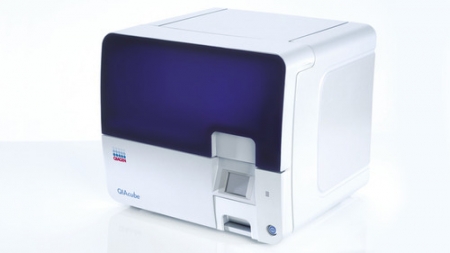
The QIAcube is an automated system which can extract DNA or RNA from up to 12 samples simultaneously, reducing the amount of time a researcher needs to spend loading samples and washing columns.
FEATURES
- Compact automatic sample prep instrument using column kits, which are commonly used for manual processing
- Ideal solution for scientific and clinical laboratories
- Capacity 1-12 samples
- More than 3 000 validated protocols for nucleic acids extraction from different types of samples.
- UV-decontamination
- Barcode reader
- Touch-screen control and table for user-friendly operations
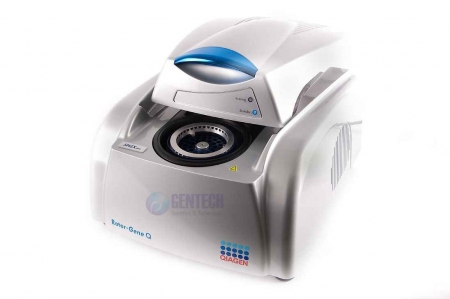
Integrated automated sample preparation and assay setup, with manual transfer to the detection unit, for all molecular testing needs
What Is It?
The therascreen fibroblast growth factor receptor (FGFR) Rotor-Gene Q (RGQ) polymerase chain reactions (PCR) kit tests a tumor sample from patients with urothelial cancer for genetic mutations in certain fibroblast growth factor receptor (FGFR2 and FGFR3) genes. These genetic mutations may cause cancer to grow.
When Is It Used?
Doctors use the therascreen FGFR RGQ PCR kit laboratory test to select the best treatment options for a patient with urothelial cancer, including determining whether Balversa (erdafitinib), a drug that slows the growth of tumors that have certain mutated FGFR genes, is a treatment option.
How Does It Work?
The doctor takes a small amount of tumor tissue from the patient’s tumor and sends it to a lab. At the lab, ribonucleic acid (RNA) is isolated from the patient’s tumor cells and mixed with reagents that specifically make copies of the tumor’s FGFR genes. Different colored dyes are used to detect normal FGFR genes and mutant FGFR genes. The lab results are reported to the patient’s doctor, who then uses this information to help select the best treatment options for their urothelial cancer patients, including determining whether Balversa (erdafitinib) is a treatment option.
When Should It Not Be Used?
The test should only be used on patients with urothelial cancer. There are no known contraindications.

